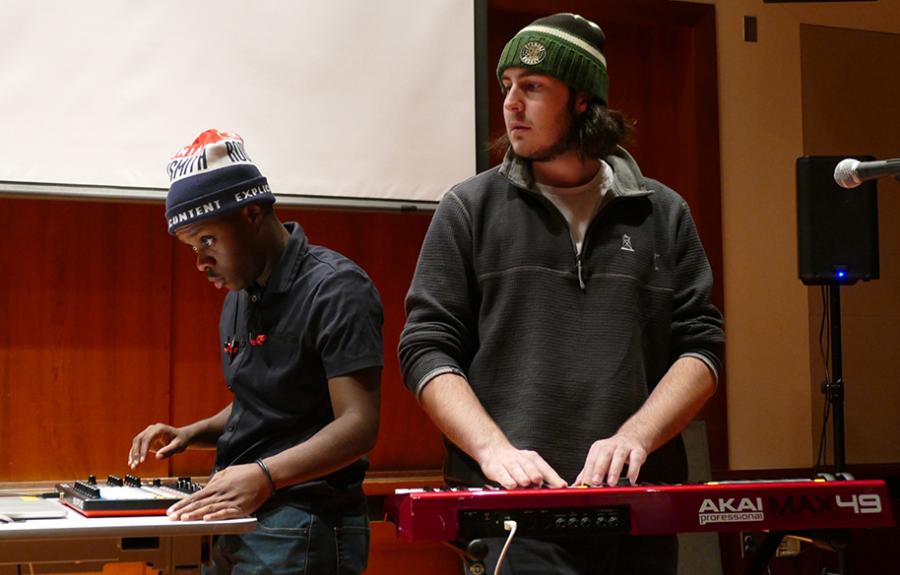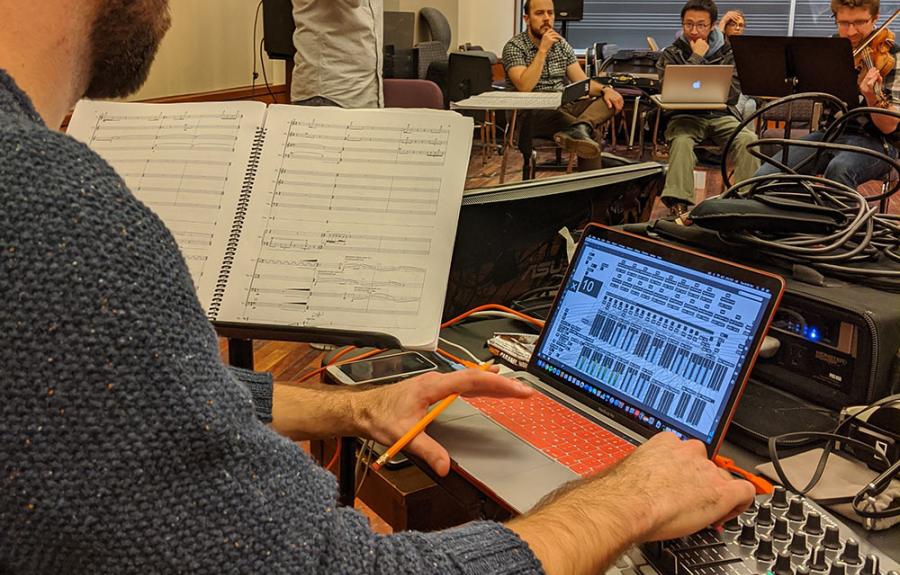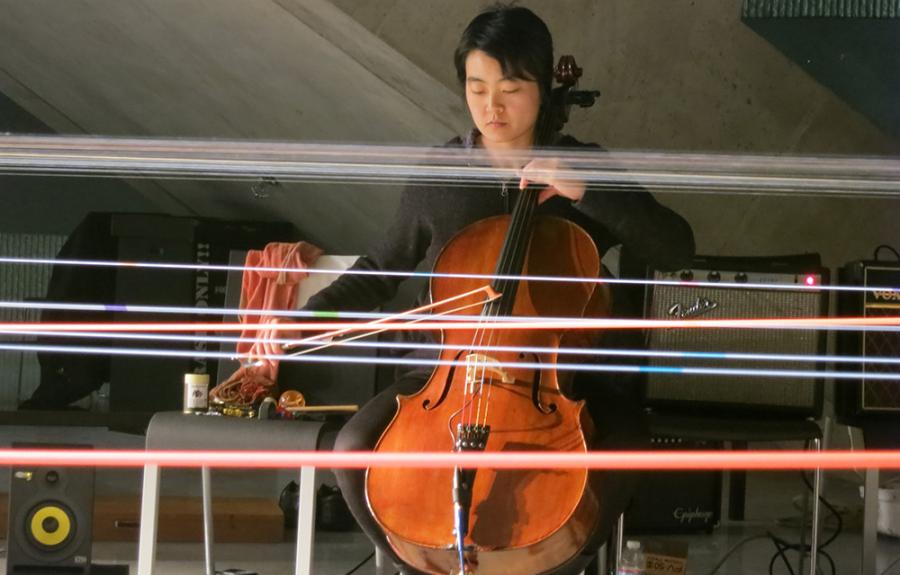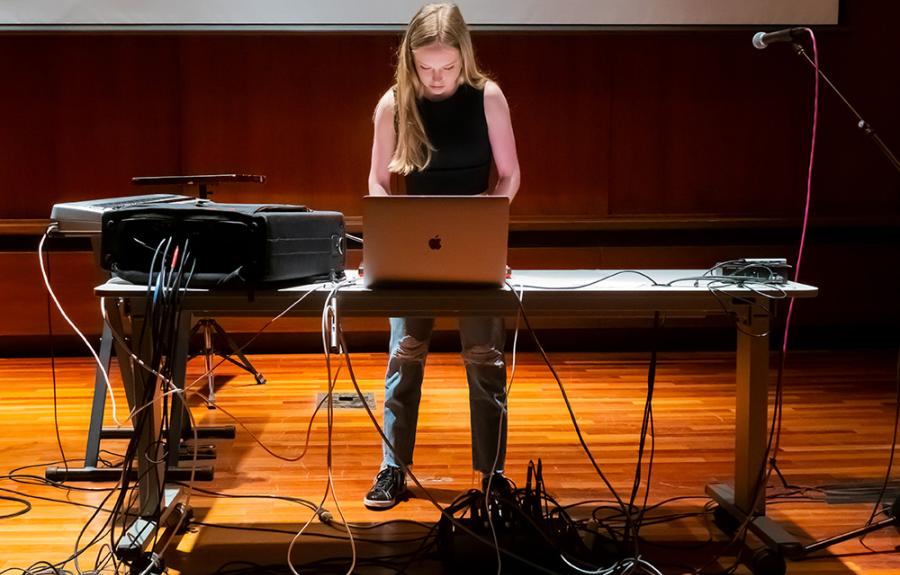The Cornell Electroacoustic Music Center’s (CEMC)‘s purpose is aligned with that of the Department of Music as a whole: to facilitate the individual creative musical ideas of Cornell’s diverse and distinguished student body. This “anything is possible” philosophy is in keeping with Ezra Cornell’s original vision for the university as “an institution where any person can find instruction in any study.”
CEMC seeks to support a wide variety of creative inclinations. As such it has no particular software or hardware bias, concentrating instead on providing a powerful array of tools which users can assemble into ad hoc toolkits, a modular philosophy that extends beyond the studios themselves and into the relationship of CEMC to other departments and disciplines. Currently, the facilities include five studios all but one of which offers isolated workstations for critical listening.
Visit the CEMC website, or explore information about our facilities below.
CEMC Director: Professor Kevin Ernste
Facilities:
Studio A:
Equipped with multichannel spatialization capability, this studio is used primarily by graduate students. Its large size and acoustical design makes it ideal for recording small ensembles or larger instruments. In addition, it features high-quality video recording/relay offering outbound live streaming of in-studio performances.
Studios B, C, and D:
Primarily for use by undergraduates in Music 1421 and 2421, Studios C and D are identical studio equipped with an iMac computer and Korg’s KONTROL49 control surface. The rooms are large enough for one or two instrumentalists and are used for recording, editing, mixing, and mastering of student projects.
Office Studio:
This room houses the studio server and a workstation for one-on-one instruction. Graduate students use this space as overflow when Studio A is in use and as a central office for email and printing.
Cox Library Teaching Lab:
This 14 workstation (10 PC, 4 Mac OSX) space provides a group instruction environment, as well as notation and printing facilities for graduates and undergraduates. In addition to the workstations the space features a 50-inch plasma display for demonstration purposes.




